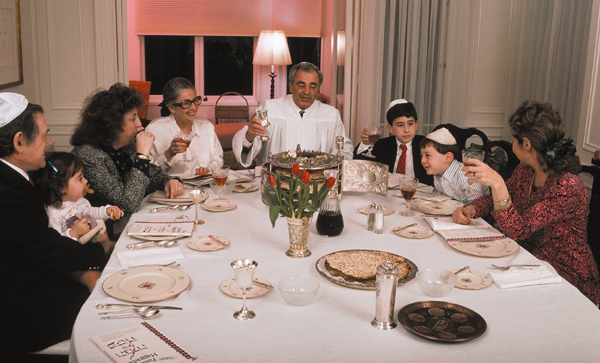Image Details

Photo by Rodger Ressmeyer, San Francisco/Corbis
A San Francisco seder. California Rabbi Jack Frankel and his family lift the first glass of wine during a Seder meal, held on the first night of Passover (and the second night in the Diaspora). The Seder commemorates the Exodus from Egypt. Throughout the meal, the biblical story is retold; the food is linked symbolically with the Exodus.
In front of each diner is a copy of the Haggadah, the book of prayers, hymns, biblical passages and rabbinic texts read aloud during the Seder. An elaborate, four-tiered Seder plate stands before the rabbi. The bottom three levels hold matzah (a fourth piece of matzah appears on a separate plate in the foreground), the unleavened bread that recalls the rapidity of the Israelites’ flight from Egypt; they were in such a rush, Exodus 12:39 relates, they could not even wait for the dough to rise.
The top plate holds a roasted egg, which is variously interpreted as a symbol of life, spring, the circle of life, or sacrifice; a green vegetable (probably parsley), which represents the leaves used to spread blood on the doors’ of the Israelites in Egypt; charoset, a mixture of apples and walnuts with wine and cinnamon, which recalls the mortar the Israelites used for building in Egypt; horseradish, which represents the bitterness of suffering in Egypt; and a lamb’s shank bone, which represents the Passover sacrifice (see photo of sacrifice of the Passover lamb).
